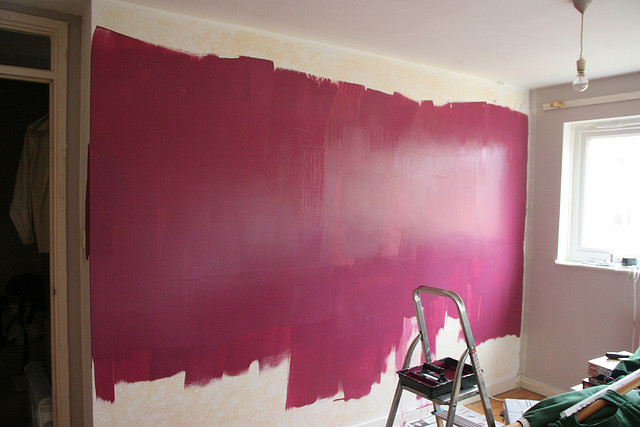Basics of Accent Walls
Painting an accent wall is a great option when you want to use a crazy or brilliant color scheme, but you also want to avoid overpowering the room.
Materials:
Painting Procedures
- Cleaning
- Tape
- Patching
- Prime
- Painting
- Finishing touches
Set up the drop cloths. Use the dust cloth for wiping the accent wall and the baseboard’s top. If there is dirt on the wall, or if it is in the kitchen or bathroom, wear gloves. Use water and a deglosser or cleaning agent to wash the wall.
The painter’s masking tape should be applied to the ceiling, baseboard and both sides of the walls following the edges of the accent wall. Press down hard on the edges of the tape facing the accent wall.
Cover any gouges with the patch material using the putty knife, and let it dry. The patches should be sanded flat beginning from 100 grit before increasing to 150 grit. Make a last pass with 180 grit on the woodwork. Clean up the sanding residue. If there are patches, use texture spray on this if you are dealing with a textured wall.
Use the synthetic bristle brush for priming the patches. If you want to prime the whole surface, utilize the brush by applying a band of primer around two inches in width. This should be done along the taped edges by moving the brush away from the tape. Empty the primer into the paint tray. Prime the largest part of the accent wall using the roller. Work on areas around three feet across each time. First, each section’s top should be primed by rolling on primer into the shape of the letter N. To make the primer even, roll it vertically. In a similar manner, you should prime the section’s bottom part. Finally, run the roller, which should be almost dry, from the wall’s top part to the bottom. Repeat this once with the primer, and leave it to dry.
Apply the latex paint to the wall by repeating the same process. Paint the edges in sections as you approach the wall. After rolling from the wall’s top to the bottom in all areas, do not go back to touch up sections that appear thin. Leave it to dry.
If the paint appears thin or blotchy after drying, apply another coat, and leave the paint to dry again. After this, carefully remove the tape. Using an artist’s brush, go over the places where the paint seeped beneath the tape or where the paint was pulled away by the tape.
For a strong and elegant look, use a deep ground color for the windows and furnishings. This will achieve a balanced appearance with the brightly colored accent wall.
